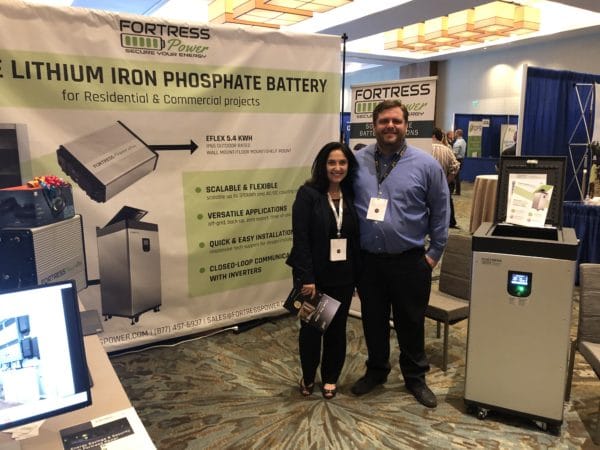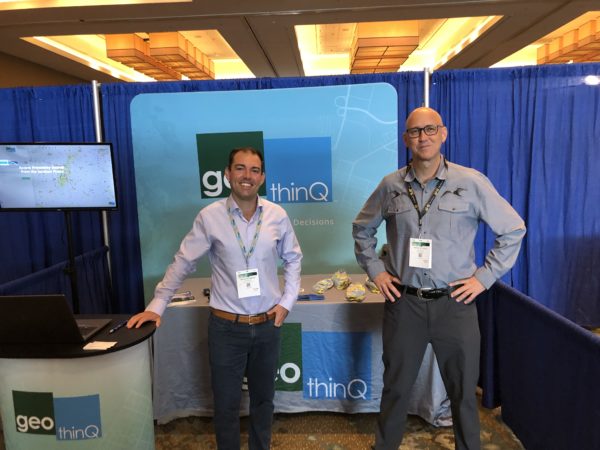Over 1,500 smiling faces gathered in Boston’s Seaport district to forge connections and display products and services live and in-person for the first time since the pandemic. Business cards changed hands, product spec sheets were passed around, and print copies of pv magazine were distributed by yours truly throughout the expo hall.
The Solar and Energy Storage Northeast expo ran June 9 and 10 attracted nearly 70 exhibitors who displayed their latest innovations and products. And while this event was smaller than in previous years, there was palpable energy in the air as the element of human connection facilitated great discussions.
Similar message came from many attendees: this conference felt like a fresh start. It was characterized by the exchange of powerful ideas and actionable connections.
Buyers and suppliers from over 300 unique organizations explored business solutions, new technologies, policy initiatives, and market dynamics at the Solar Energy Industries Association (SEIA) and Smart Electric Power Alliance (SEPA) sponsored event. All proceeds from the event support the expansion of the solar energy industry through SEIA and SEPA’s year-round research and education activities, and SEIA’s extensive advocacy efforts.
Tech roundup
Here are some of the tech highlights from this year’s expo.
Fortress Power
 Fortress Power unveiled its eVault Max 18.5 kWh lithium battery storage unit, boasting increased safety, easy of installation, and scalability.
Fortress Power unveiled its eVault Max 18.5 kWh lithium battery storage unit, boasting increased safety, easy of installation, and scalability.
The unit was on display, which was easy enough for the exhibitors to do, as this design includes wheels for easy install and maintenance. The unit has a front-facing wall that can be removed for access to the four cells contained inside. Fortress Power says these features save time, and lead to a one- to two-hour install time.
Fortress Power’s battery can be used for whole-home backup, off-grid storage, peak reduction, and demand shaving, and is applicable at both residential and small commercial scales. The battery can build out to as many as 20 units in parallel, achieving 370 kWh. The company uses lithium iron phosphate technology, which they say is a safer and more environmentally friendly option than typical battery elements.
QuickBOLT
QuickBOLT offered the QB1 microflashing, a mounting solution that saves material and eliminates the need for removing shingles or underlayment. The QB1 is a patented small “puck” that sits on top of a pre-drilled hole drilled directly through the shingles and into rafters. It is then fastened with a collar and “L-Foot” to sit flush with the roof.
The company said it has over 1 million QuickBOLT mounts installed with no reports of leaks. Additional “miniflashing” that is smaller than the size of a typical shingle can be added for an even greater water-tight seal.
geothinQ

geothinQ develops GIS mapping software for site suitability analysis. Its customizable and user-friendly GIS platform allows solar developers to search for property that meets a solar project’s criteria.
The geospatial tool allows the user to make informed decisions by supplying data about transmission line and substation proximity, land evaluation and site buildability analysis, and due diligence. geothinQ is not only a mapping tool, but a team of spatial data experts to provide support.
Enteligent
 California startup Enteligent displayed the SolarUp Rapid Shutdown Module, a rapid shutdown device (RSD) with module-level power electronics (MLPE) for efficient power optimization. The company said the device will be available in August and adds the benefit of power optimization at a price competitive with standalone RSD.
California startup Enteligent displayed the SolarUp Rapid Shutdown Module, a rapid shutdown device (RSD) with module-level power electronics (MLPE) for efficient power optimization. The company said the device will be available in August and adds the benefit of power optimization at a price competitive with standalone RSD.
The Sunspec certified device allows for ease-of-install and service, housing both RSD and MLPE in a single location. SolarUp Single provides module-level shutdown and optimization across two panels, while SolarUp Dual allows for shutdown at module level with independent module optimization for two panels.
Enteligent said it soon will release a residential EV Quick Charger. This device charges directly from solar, delivering what the company said would be as much as 13% more electricity from panels than traditional EV charging. After sunset, the charger pulls from storage or the grid. This product will ship in Q2 2022, and has both commercial and residential applications.
S-5!
S-5! metal roofing solutions featured its PVKIT 2.0, a standing seam metal roof mount that reduces the total weight and volume of the installed solar system. S-5! said that a standing seam roof already contains integrated “rails” and their direct-attach utilizes this feature of a metal roof.
The result is what S-5! says is an 85% reduction in weight, 25% better load distribution, 70% fewer components, and lower material costs compared to rail mounting. The lighter weight and smaller component also leads to lower transport and logistics costs, the company said.
This content is protected by copyright and may not be reused. If you want to cooperate with us and would like to reuse some of our content, please contact: editors@pv-magazine.com.









By submitting this form you agree to pv magazine using your data for the purposes of publishing your comment.
Your personal data will only be disclosed or otherwise transmitted to third parties for the purposes of spam filtering or if this is necessary for technical maintenance of the website. Any other transfer to third parties will not take place unless this is justified on the basis of applicable data protection regulations or if pv magazine is legally obliged to do so.
You may revoke this consent at any time with effect for the future, in which case your personal data will be deleted immediately. Otherwise, your data will be deleted if pv magazine has processed your request or the purpose of data storage is fulfilled.
Further information on data privacy can be found in our Data Protection Policy.